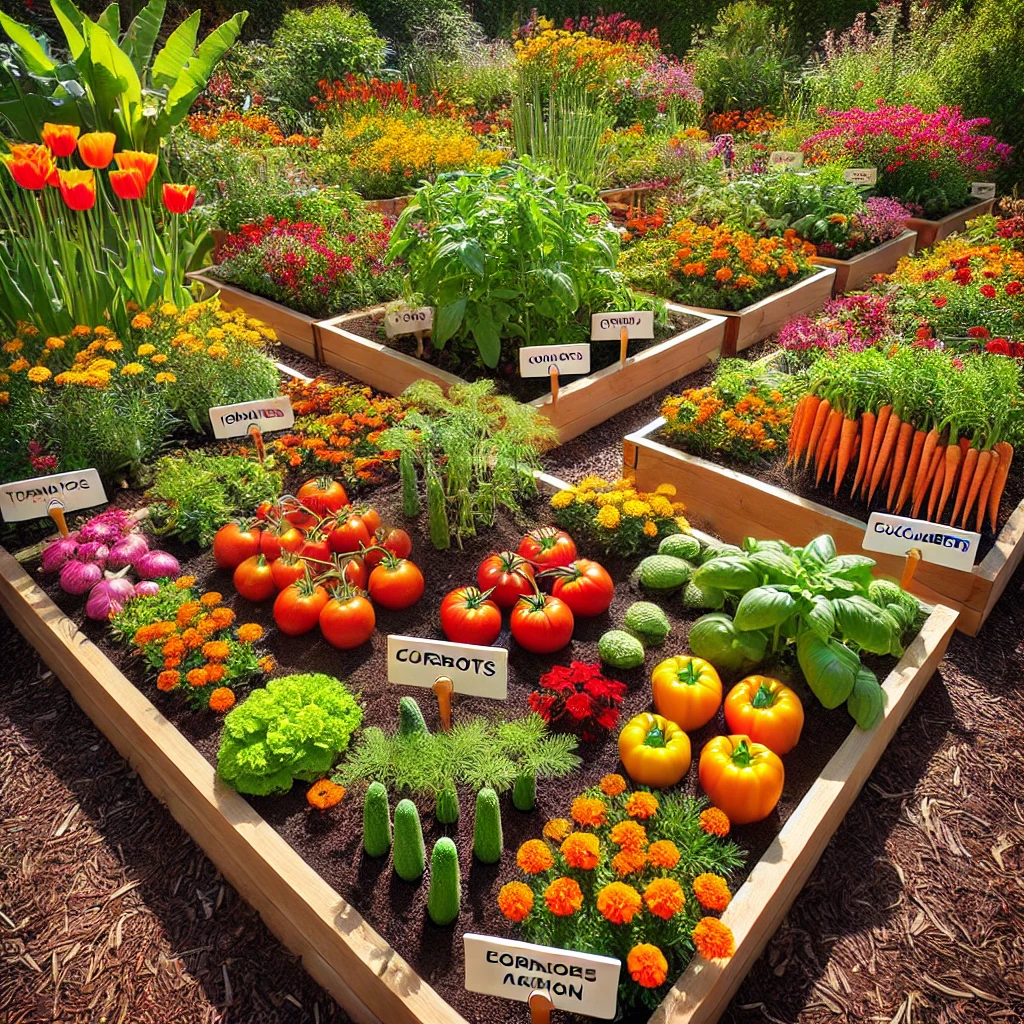The Ultimate Guide to When to Plant Vegetables and Why
Planting vegetables at the right time is key to a successful harvest. Knowing the best times to plant ensures that your crops have optimal growing conditions, leading to healthy and productive plants. Climate, soil conditions, and the specific needs of each vegetable play a crucial role in determining when to plant.
By timing your plantings correctly, you can extend your growing season, enjoy fresh produce for longer, and prevent common issues like diseases and pest infestations. With proper planning and knowledge, you can create a thriving vegetable garden.
When to Plant Popular Vegetables
Tomatoes 🍅
• Planting Time: Late spring to early summer (May to July), after the last frost.
• Why: Tomatoes need warm soil and plenty of sunlight to thrive.
• Harvest: Late summer to early fall (August to September) when fully ripe.
Onions 🧅
• Planting Time: Early spring (March to April) or late summer (August to September).
• Why: Onions prefer well-drained soil and full sun.
• Harvest: When tops yellow and fall over (August to September). Cure by drying for longer storage.
Peppers 🌶️
• Planting Time: Late spring to early summer (May to July), after the last frost.
• Why: Peppers require warm soil and full sun.
• Harvest: Late summer to early fall (August to September) when they reach full color.
Squash 🎃
• Summer Squash (Zucchini): Plant in late spring to early summer (May to July).
• Winter Squash (Pumpkins, Butternut): Plant in late summer (July to August).
• Why: Squash thrives in warm temperatures.
• Harvest: Summer squash when young and tender (July to August); winter squash when skin hardens (September to October).
Carrots 🥕
• Planting Time: Early spring (March to April) or late summer (August to September).
• Why: Carrots prefer cool soil and grow best in well-drained conditions.
• Harvest: 60-80 days after planting; spring-planted carrots in early summer, late-summer-planted carrots in fall/winter.
Broccoli 🥦
• Planting Time: Early spring (March to April) or late summer (August to September).
• Why: Broccoli prefers cool temperatures and moderate shade.
• Harvest: 60-80 days after planting; spring-planted in early summer, late-summer-planted in fall/winter before flowers open.
Cucumbers 🥒
• Planting Time: Late spring (May to June), after the last frost.
• Why: Cucumbers thrive in warm weather with full sun.
• Harvest: 50-70 days after planting; pick continuously in summer (June to August) to encourage production.
Lettuce 🥬
• Planting Time: Early spring (March to April) or fall (September to October).
• Why: Lettuce grows best in cool temperatures and partial shade.
• Harvest: 30-70 days after planting; pick leaves early before they turn bitter. Spring lettuce is ready by early summer; fall lettuce in late fall.
Beans 🫘
• Planting Time: Late spring (May to June), after the last frost.
• Why: Beans require warm soil and full sun.
• Harvest: 50-60 days after planting; harvest green beans in summer until plants stop producing.
Radishes 🌱
• Planting Time: Early spring (March to April) or late summer (August to September).
• Why: Radishes prefer cool weather and grow quickly.
• Harvest: 20-30 days after planting; spring radishes in early summer, late-summer radishes in fall.
Beets ❤️
• Planting Time: Early spring (March to April) or late summer (August to September).
• Why: Beets grow best in cool soil with full sun.
• Harvest: 50-70 days after planting; spring beets ready by early summer, late-summer beets in fall or early winter.
Why Timing Matters in Vegetable Gardening
1️⃣ Maximizes Growth Potential – Planting at the right time ensures that vegetables grow in their ideal conditions, leading to stronger plants and better yields.
2️⃣ Extends the Harvest Season – Proper timing allows for continuous harvests, so you can enjoy fresh produce longer.
3️⃣ Prevents Pests and Diseases – Planting too early or late can make plants more vulnerable to issues like fungal infections and insect damage.
4️⃣ Optimizes Soil and Weather Conditions – Some vegetables prefer cool soil, while others need warm temperatures to thrive. Planting accordingly improves success rates.
With the right timing and planning, you can create a productive and healthy vegetable garden, providing fresh, homegrown food for months to come! 🌱🥕🍅

